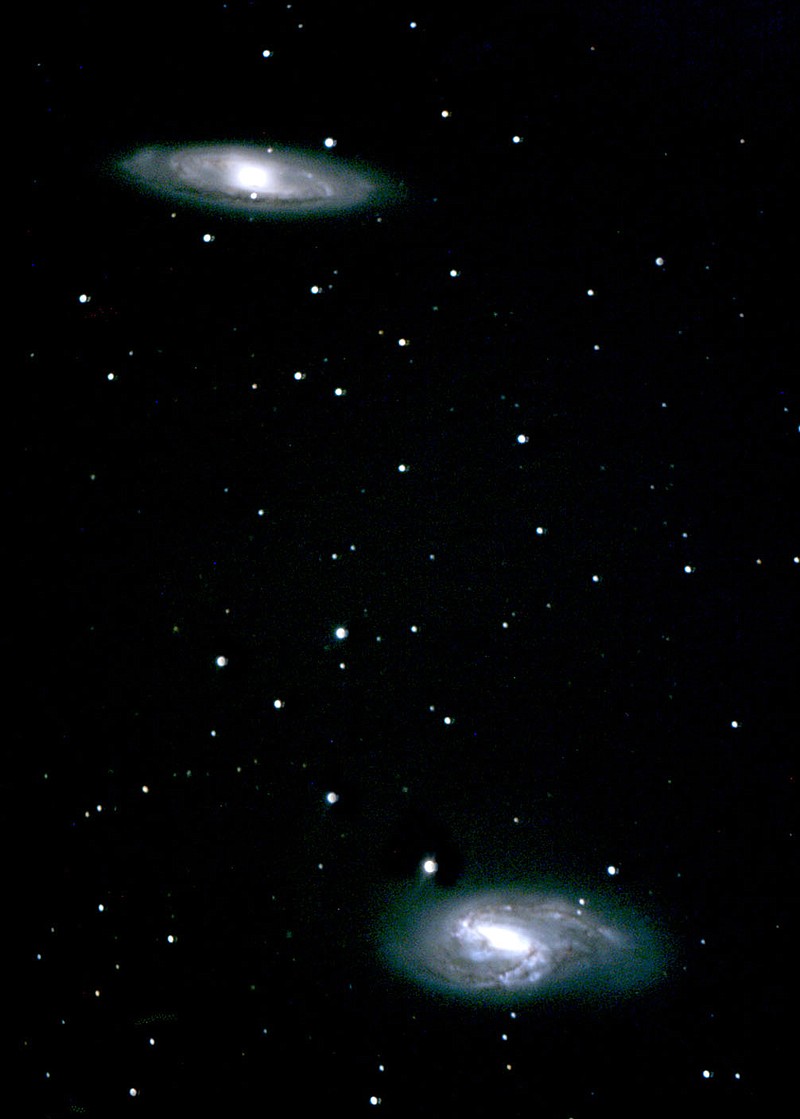In March, spring will be nearby in time. I know it will come, even though we could have some rough weather before it is upon us. However, I notice my daffodils are just starting to pop their heads above the fallen leaves in my yard and they can't be wrong.
As spring comes on, the amateur astronomer knows it will soon be galaxy season. In fact, if one stayed up to say, 1 a.m., the so-called "Realm of the Galaxies" would be accessible conveniently in a mid-sized telescope.
As Earth moves through its orbit around the sun, various parts of the universe become easier to see than others. In summer, the glory of the Milky Way, the inner arms of our own galaxy, are easily seen under dark skies. In winter, constellations such as Auriga the Charioteer, Cassiopeia the Queen and Orion the Hunter fill the night sky.
All of these parts of the universe are in our own home galaxy and, on the cosmic scale of things, not too far away. However, as spring comes on, we earthlings can gaze at a part of the sky where many other galaxies, far beyond the Milky Way, become visible. We are looking off the plane of the Milky Way and, at one place in the sky, just on the rear end of Leo the Lion, is an enormous cloud of galaxies known as the Realm of the Galaxies. [The formal name is the Coma-Virgo galactic cluster because the galaxies are strewn across the borders of the constellations Virgo and Coma Berenices.]
Galactic members of this swarm are all invisible to the naked eye so to non-amateurs, without telescopes, this is all underwhelming. But, if you have a telescope, even only about six inches in aperture, you can see a few of them as tiny, faint splotches of light. Here is where the size of one's telescope really starts to count. At about 10 inches of aperture and if one has dark skies and sharp eyes, one can see about 50 of these galaxies and up to 100 or more with 'scopes from 12 inches up. Hunting galaxies is a major commitment for many amateur astronomers so they get very busy in spring.
I have been spotting galaxies with various telescopes from my teens. I have also tried to photograph some of the brighter ones -- a real challenge. The galaxies presenting in spring are very faint. It takes large apertures, long exposures and high photographic speed to get decent images. When I do manage to capture a faint fuzzy, millions of light-years away, I really do feel triumphant!
I offer an image of two galaxies near Leo that I made with the 16-inch reflector at JBU -- some years ago when I was privileged to serve on the faculty there. These two galaxies are close enough to one another that they are influenced by one another's gravity and travel through space-time as a pair. The 16-inch was big enough to reveal some inner structure of these galaxies and one can see that they are spiral galaxies, the same type of galaxy as our Milky Way. The pair lies around 40 million light-years away!
The night sky can seem a bit boring in spring to naked-eye observers. To someone with a medium-sized telescope and the patience to hunt diligently, spring presents many a hidden, faint treasure.
The major planets have moved out from behind the sun from our perspective and are now morning objects, near the eastern horizon, just before dawn. They will be close to the eastern horizon so one would need a flat, unobstructed horizon to the east to see them. As the year moves on, they will become higher in the dawn sky and easier to see.
What a wondrous universe we have! And, the show is all free! Keep looking ...
David Cater is a former faculty member of JBU. Email him at [email protected]. Opinions expressed are those of the author.

